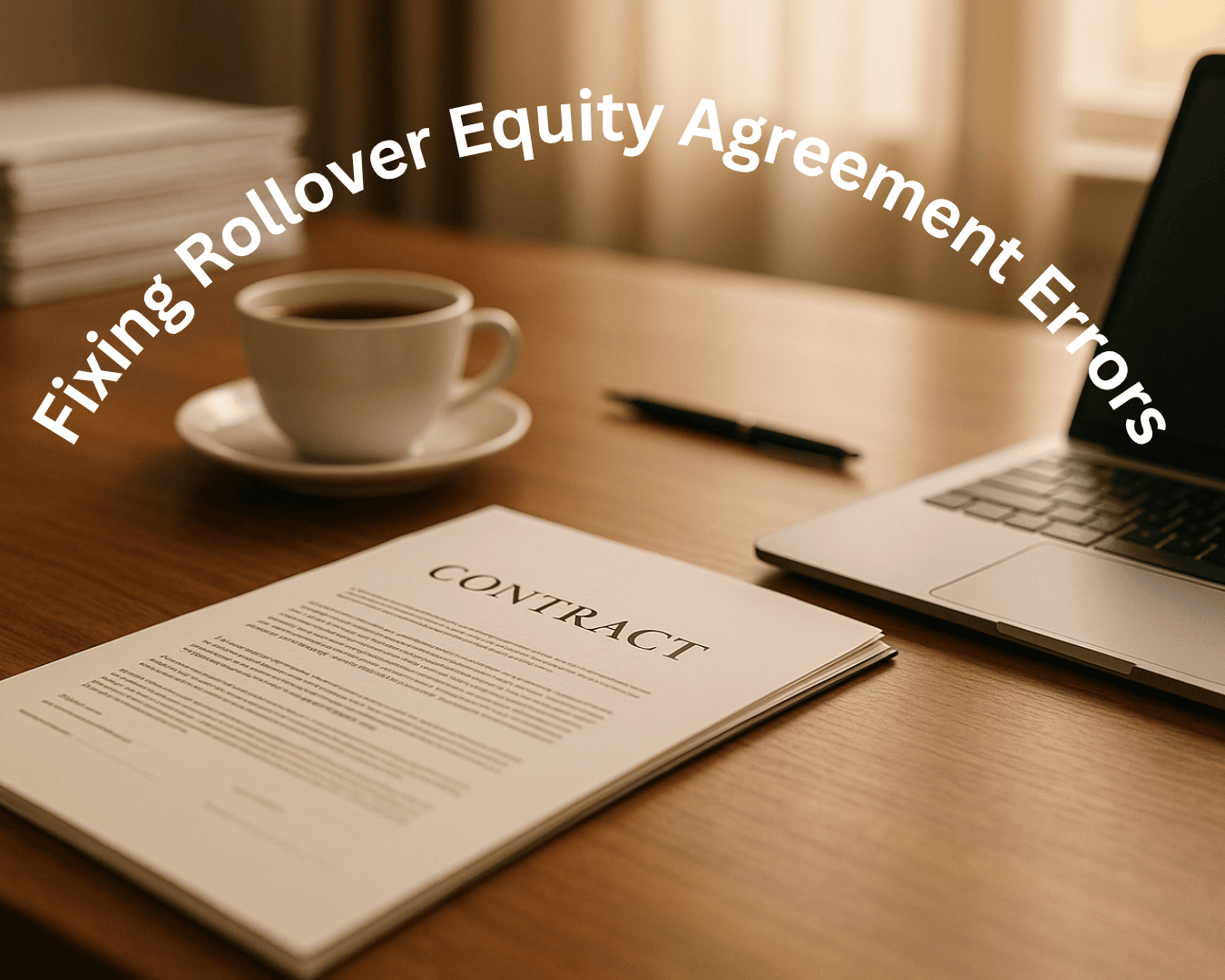Post-closing governance documents are critical for ensuring a smooth transition after a business acquisition. Here's what you need to know:
- Board and Member Resolutions: These formalize decisions like appointing new officers and authorizing bank accounts. They ensure authority and compliance with regulatory requirements.
- Bylaws or Operating Agreements: These define internal rules, voting thresholds, and management roles, tailored to the new ownership structure.
- Shareholder or Member Agreements: These outline ownership rights, voting thresholds, and transfer restrictions, ensuring clarity among stakeholders.
- Officer and Incumbency Certificates: These verify who is authorized to act on behalf of the company, a necessity for banks and lenders.
- Ownership Records and Cap Table Updates: Accurate records of ownership and equity changes are vital for compliance, audits, and future transactions.
Each document plays a role in establishing authority, maintaining compliance, and avoiding operational delays. Neglecting these steps can lead to disputes, funding issues, or even legal challenges. Prioritize these updates within the first days and weeks post-closing to set the stage for a stable and efficient business transition.
How to Do a Venture Capital Financing Webinar
1. Board and Member Resolutions
Board and member resolutions are the formal written actions that authorize and validate key decisions after a transaction closes. For corporations, these resolutions are passed by the board of directors, while LLCs rely on member or manager resolutions, depending on their management structure. These documents are crucial for establishing decision-making authority and meeting regulatory requirements.
Establishes Authority and Corporate Formalities
Resolutions are essential for granting proper corporate authority. They typically address actions like ratifying the purchase agreement and related documents, appointing new directors, managers, and officers, approving updated bylaws or operating agreements, and authorizing new bank accounts with designated signatories. They may also include authorizations for indemnification, insurance policies, equity issuances, regulatory filings, and tax elections, such as S-corp status.
Each resolution must reference the specific closing date and align with the transaction documents to ensure continuity in authority.
The approval process varies by entity type. Corporations generally require board approval for most actions and, in some cases, stockholder approval, depending on the charter, bylaws, and state laws. LLCs, on the other hand, operate under more flexible rules, with approvals coming from members, managers, or both, based on the operating agreement and state statutes.
Reflects Post-Closing Ownership and Governance Terms
Resolutions must align with the final capitalization table and equity transfer schedules to avoid discrepancies with the purchase agreement. Detailed schedules - such as lists of post-closing directors, managers, and officers - should be attached, along with references to the closing certificate, to connect the resolutions directly to the updated ownership structure.
The most effective resolutions explicitly reference the ownership ledger or members register and confirm that all appointments and authorities are effective as of the closing date. This creates a seamless trail of documentation linking resolutions to the finalized ownership structure.
One common mistake is misaligned effective dates, which can delay operations. If resolutions don’t match the closing timestamp or fail to include all officers and signatories, banks and vendors may be unable to process updates. Clear and accurate documentation not only ensures ownership accuracy but also supports compliance with all closing conditions.
Supports Compliance with Closing and Post-Closing Conditions
Resolutions play a vital role in five key areas: authorizing the transaction, approving transfer instruments and assignments, confirming officer authority for certificates and closing documents, securing insurance and regulatory approvals, and ensuring deliverables are completed by their deadlines.
In September 2019, Holland & Knight's "Sample Post-Closing Legal Integration Checklist" highlighted how resolutions facilitate compliance. Tasks such as implementing records retention policies, digitizing acquired company files, and preserving documents for audits or litigation are often carried out through formal approvals and directives.
Well-prepared resolutions create a clear compliance trail that auditors and lenders can easily follow. This is especially important for SBA-financed acquisitions, where lenders often demand specific governance documents before releasing funds. Missing or improperly executed resolutions can lead to frozen accounts or operational disruptions.
Provides Accurate and Authoritative Ownership Records
Creating accurate ownership records involves several steps: finalizing equity transfer schedules and closing deliverables, passing resolutions to approve the updated ownership structure, updating the stock ledger or members register and capitalization table, issuing new certificates or digital confirmations, and centralizing all documentation in a secure repository.
Resolutions should include several key exhibits to ensure they are ready for closing and audits. These may include:
- An officer or incumbency certificate listing names, titles, and specimen signatures
- Schedules of appointed directors, managers, and officers
- References to executed transaction documents with dates
- The updated capitalization table or members register as of closing
- Banking resolutions and signer cards
- Any necessary consents or waivers
For smaller acquisitions, tools like Clearly Acquired can simplify this process by integrating advisory services, financing options (such as SBA 7(a) and SBA 504 loans), and deal management tools. These platforms help reduce delays between closing and operational handoff by offering automated resolution templates and workflow management.
Executing these resolutions requires careful timing. Drafts should circulate 5 to 2 days before closing, with final details - such as names, titles, and banking information - confirmed the day before. On closing day, resolutions and officer certificates should be executed alongside the purchase agreement. Within the first two business days, update bank signers and notify vendors and customers. Remaining tasks, like insurance updates and tax elections, should be completed within the first 10 days. This detailed approach ensures smooth transitions and sets the foundation for future governance updates.
2. Bylaws or Operating Agreement
After setting formal resolutions, updating bylaws or operating agreements is the next step to establish clear internal procedures for a smooth transition. These documents act as the rulebook for how your newly acquired company operates. They outline decision-making processes, define management roles, and provide a framework for future actions. Ensuring these are updated post-closing is key to maintaining operational efficiency and staying compliant with legal requirements.
Establishes Authority and Corporate Formalities
Revised bylaws or operating agreements should clearly outline meeting protocols and officer responsibilities. Corporations often require more structured procedures, such as board meetings with proper notice, quorum rules, and documented votes. LLCs, while offering more flexibility, still need defined authority structures to avoid disputes and ensure limited liability protection.
Key updates might involve adjusting quorum and voting thresholds to reflect new ownership. For instance, if the previous owner required a simple majority for board decisions, but your new structure includes multiple investor classes, you may need supermajority approvals for actions like borrowing over $500,000, mergers, dividend distributions, or budget approvals.
Clearly defining officer roles and signing authority is essential to avoid unnecessary delays. Specify which officers are authorized to execute contracts, open accounts, or represent the company in legal matters. This ensures smooth operations when dealing with banks or vendors requiring authorized signatures.
Adopt procedures that meet state law requirements while promoting efficiency. Whether you choose quarterly board meetings with formal minutes or use written consent resolutions for routine decisions, consistency is crucial.
Reflects Post-Closing Ownership and Governance Terms
Your governance documents must align with the finalized ownership structure. This includes updating board composition and investor rights to match the capitalization table and ownership percentages outlined in the purchase agreement. Define how many directors each investor class can appoint, procedures for removing underperforming board members, and any special rights for key stakeholders.
Protective provisions like consent rights, veto powers, and information rights should be included to safeguard multi-party interests. For example, if rollover sellers retain 20% ownership, they might negotiate veto rights over debt exceeding 3.0x EBITDA or acquisitions above $1,000,000.
Transfer restrictions and buy-sell provisions are also critical. Include mechanisms like rights of first refusal (allowing existing owners to buy a departing member's interest), drag-along rights (enabling majority owners to compel minority sales in exit scenarios), and tag-along rights (protecting minority owners in partial sales).
For LLCs, profit and loss allocation must be explicitly defined. While distributions are often based on ownership percentages, some structures may include preferred returns for specific investor classes or performance-based allocations tied to EBITDA growth.
Supports Compliance with Closing and Post-Closing Conditions
Well-crafted governance documents ensure compliance with both closing and ongoing conditions. Conflicts often arise when outdated voting thresholds block necessary restructurings or when old transfer restrictions hinder equity issuances for management incentive plans.
To address this, include pre-approval language for transactions required by the purchase agreement. For example, if the agreement mandates creating a management incentive pool within 90 days, the operating agreement should authorize the board to make awards within specified parameters without needing additional member consent.
Lender requirements also shape governance updates. In SBA 7(a)-financed acquisitions, for instance, lenders often impose restrictions on distributions without prior consent and require affirmative covenants, such as monthly financial reporting. Embedding these provisions reduces the risk of loan defaults.
A supremacy clause can help resolve conflicts between governance documents and the purchase agreement. This clause ensures that, in case of discrepancies, the purchase agreement takes precedence, preventing technical breaches that could disrupt operations.
Provides Accurate and Authoritative Ownership Records
Governance documents should include exhibits that establish clear and authoritative ownership records. Attach a detailed capitalization table listing all shares or units, their classes or series, and any options, warrants, or convertible securities. Include holder names, tax identification numbers, and precise ownership percentages, calculated to four decimal places.
To maintain accuracy, appoint a corporate secretary or manager to update the ownership ledger monthly, with certifications from the board or managers. This creates a reliable record for auditors and lenders.
For management incentive equity, define incentive pools by class, including vesting schedules, forfeiture rights, and rules for termination or change-in-control events. Reference established valuation methods - whether through independent appraisals or pre-agreed formulas - to minimize disputes.
For example, in an $8,500,000 LLC acquisition, the operating agreement shifted to a manager-managed structure with a five-member committee. Routine decisions required a simple majority, while major transactions needed a supermajority, including at least one buyer designee. The agreement also implemented a 12% profits-interest incentive plan with four-year vesting and restrictions on distributions under high leverage.
For buyers juggling complex governance updates, tools like Clearly Acquired can simplify coordination among legal counsel, lenders, and investors. These platforms provide educational resources and workflow management tailored to U.S. small-business acquisitions.
Next, we’ll dive deeper into the differences between corporate and LLC governance to clarify entity-specific requirements.
3. Shareholder or Member Agreement
Shareholder (or member) agreements serve as binding contracts for equity holders, outlining ownership rights, restrictions on transfers, and exit strategies. These agreements also reinforce the governance and economic terms negotiated in the purchase agreement.
Reflecting Post-Closing Ownership and Governance Terms
A key component of these agreements is defining voting thresholds. Routine matters might require a simple majority, while major decisions - like amending governing documents, issuing senior securities, or incurring substantial debt - often demand a supermajority vote of 66⅔% or 75%.
For LLCs, the agreement should specify how managers are appointed and the extent of their authority. To protect minority stakeholders, include provisions like consent rights for major acquisitions, veto powers over significant debt, or approval requirements for changes in executive compensation. Additionally, granting information rights - such as regular financial updates and annual audits - helps ensure transparency and supports investor oversight. These rights are particularly important for tracking earnout obligations.
Management incentive plans also require detailed attention. Include performance-based vesting schedules, repurchase rights for terminated employees (distinguishing between "good leavers" and "bad leavers"), and board oversight for any changes to the incentive programs. Establish a clear process for periodic reporting and certification to confirm that performance targets linked to vesting or earnout payments are being met.
Supporting Compliance with Closing and Post-Closing Conditions
Post-closing covenants in shareholder or member agreements play a critical role in maintaining compliance with key obligations. These covenants might cover obtaining remaining third-party consents, meeting escrow commitments, or providing regulatory notices within specific timeframes. Strong information and audit rights can help track and enforce these requirements.
For acquisitions financed through the SBA, agreements should address lender restrictions, such as prohibitions on distributions without prior consent. Provisions like monthly financial reporting can minimize the risk of operational hiccups tied to lender covenants.
To safeguard integration efforts, include non-compete and non-solicitation clauses with clearly defined scopes and durations. These measures ensure compliance and set the foundation for defining signing authority in future documents.
Establishing Authority and Corporate Formalities
The agreement should include investor-specific rights and consent thresholds that override default rules. For example, formal approvals might be required for actions like pre-approving board awards for management incentive pools. Clearly defined authorization processes ensure smoother governance.
Additionally, require joinder agreements for new equity holders, whether they are employees receiving options or future investors. This step maintains consistency within the agreement as the company grows and prevents governance gaps.
Providing Accurate and Authoritative Ownership Records
Attach a finalized post-closing capitalization table that details all shares, units, classes, options, and warrants. This table should include holder names, tax IDs, and ownership percentages.
Transfer restrictions and exit rights must also be addressed immediately after an acquisition. Implement rights of first refusal (ROFR) or rights of first offer (ROFO) for secondary transfers, and establish company or majority buyback rights for separation events. Lock-up periods, typically lasting 12 to 24 months, can help prevent disruptive transfers during the integration phase.
Drag-along and tag-along rights should align with the sale thresholds outlined in the purchase agreement. Clearly specify valuation methods for forced transfers, whether through independent appraisals or pre-agreed formulas. These should also account for escrow and earnout provisions to avoid disrupting contingent arrangements.
Keep exhibits updated with capitalization tables, option pools, and vesting schedules after each board approval. Specify whether official ownership records will be maintained by the company, a digital ledger, or a transfer agent, ensuring consistency in case of discrepancies.
For buyers navigating complex post-closing governance, platforms like Clearly Acquired can simplify the process. These tools offer deal management hubs and advisory services to streamline obligations, particularly in SBA-backed transactions.
Next, we’ll dive into the officer and incumbency certificates required to establish signing authority and corporate representation.
sbb-itb-a3ef7c1
4. Officer Certificates and Incumbency Certificates
After finalizing resolutions and updating bylaws, it’s crucial to formally verify who has the authority to act on behalf of your company. Officer and incumbency certificates serve this purpose, providing legal confirmation of authorized representatives after the closing.
Establishing Authority and Observing Corporate Formalities
Once the deal is closed, your company’s banking arrangements, vendor contracts, and regulatory filings depend on clear proof of authorized signers. Banks, for instance, rely on incumbency certificates to confirm signing authority and avoid disputes.
These certificates should list each current officer’s and director’s full name, title, and signature as of the closing date. This ensures a seamless transition by replacing prior appointees and reflecting the leadership changes outlined in your board and member resolutions. Issuing these certificates promptly is essential to avoid delays in banking or vendor updates during the critical integration phase.
Officer certificates play a complementary role by confirming that the necessary board and shareholder resolutions have been adopted and that the organization’s governing documents remain in effect. Together, these certificates establish a firm foundation of corporate compliance and accountability.
Supporting Compliance with Closing and Post-Closing Obligations
Lenders and other stakeholders often require officer and incumbency certificates as part of the closing process. Errors or delays in providing these documents can disrupt funding and stall operations.
Officer certificates generally include:
- A statement affirming that representations and warranties remain accurate as of the closing,
- Confirmation that all covenants have been fulfilled,
- An assurance that no material adverse changes have occurred,
- Proof that all required consents and approvals have been secured, and
- Attachments, such as copies of executed transaction documents.
For SBA-backed acquisitions, these certificates are especially critical. They help meet lender requirements related to corporate authorization and ongoing compliance with covenants. They also create a clear audit trail for compliance teams, ensuring that post-closing obligations align with the original transaction terms.
Maintaining Accurate and Authoritative Ownership Records
While officer and incumbency certificates don’t replace cap tables or ownership ledgers, they provide a link to the governing approvals that authorized equity changes, redemptions, or leadership appointments during the transaction. This clarity helps third parties verify that changes in ownership or governance were properly authorized.
Certificates should include details like your company’s legal name, state of incorporation, office address, and an as-of date formatted as MM/DD/YYYY. An officer roster should also be included, listing key roles - such as Chief Executive Officer, Chief Financial Officer, and Secretary - along with each individual’s legal name and signature. A secretary’s certification should confirm that these individuals were properly elected and authorized as of the closing date.
To avoid issues, draft certificate templates early and add them to your closing checklist. Ensure that names and titles align with the final board resolutions, secure officer signatures and secretary attestations, and deliver executed copies in PDF format at closing. Distribute certified copies to banks, lenders, landlords, and other key parties to update accounts and verify authority.
Schedule regular reviews to account for changes in officers or directors, and reissue updated certificates as needed. Ensure these updated versions are shared with vendors and lenders to keep records current. Incorporating these tasks into a broader post-closing legal checklist minimizes gaps in documenting authority across your organization.
For buyers handling complex post-closing documentation, tools like Clearly Acquired offer platforms and advisory services to simplify the preparation and distribution of these certificates. This can be particularly helpful for SBA-backed transactions, where lender requirements are often more demanding.
The next step in governance involves updating ownership records and the cap table.
5. Ownership Records and Cap Table Updates
Keeping ownership records and the cap table up to date is essential. Mistakes here can lead to compliance headaches, as these records are the official documentation of who owns what in your company. They also play a key role in future financing, audits, and regulatory reviews. Here’s a breakdown of how to handle these updates effectively.
Aligns with Final Closing Ownership and Governance Terms
After the initial update, your cap table should reflect all equity details, including rollovers, earnouts, and contingent considerations, with clear links to the closing documents. Each entry must connect directly to a specific document - like an equity grant agreement, warrant, or merger agreement schedule - and reference the relevant resolution for audit purposes.
For corporations, this means updating the stock ledger, issuing new stock certificates (or recording uncertificated shares), revising the cap table, and documenting board and shareholder approvals for all issuances or transfers. For LLCs, you'll need to update the membership ledger, amend the capital accounts register, revise the units or membership interest schedule, and ensure these align with the operating agreement’s updated allocations and governance rights.
Don’t forget to include footnotes for vesting schedules, performance milestones, and repurchase rights. This ensures that governance details - like board seats and protective provisions - are clearly linked to the appropriate classes and holders, making it easier for stakeholders to understand their rights and for the company to prepare for future transactions.
Ensures Authority and Corporate Formalities
Ownership record updates require formal corporate approvals to maintain legal validity. File resolutions authorizing all equity actions and update the relevant ledgers. It’s also important to keep executed officer or incumbency certificates that identify the authorized signatories for equity instruments and registers.
Timing is key. Right after closing, update the stock or membership ledger to reflect new ownership, cancellations, and issuances. Document details like dates, consideration, certificate numbers, and any legends (such as escrow or transfer restrictions) to create a seamless ownership record from the closing date onward.
Addresses Compliance with Closing and Post-Closing Conditions
Many transactions include complex post-closing requirements that directly affect ownership records. For example, escrow release schedules or earnout triggers from the purchase agreement should link to specific cap table adjustments. Set calendar reminders to periodically reconcile these with escrow agent statements.
Make sure all third-party consents, government filings, and financing deliverables are completed. For SBA-backed acquisitions, lenders often require detailed ownership documentation as part of compliance. Coordinating regulatory filings, like those with the SEC or FTC, alongside ownership and cap table updates can help avoid compliance issues later.
Maintains Accurate and Reliable Ownership Records
A well-maintained equity record system prevents discrepancies and simplifies future due diligence. This system should include version-controlled equity records aligned with executed closing documents. It should also feature the cap table (both issued and fully diluted), stock or membership ledgers, copies of certificates or electronic issuance logs, option and warrant registers, board and member consents, and officer or incumbency certificates.
Use a controlled closing checklist to track every equity document, its status, the responsible party, and delivery dates. Link each cap table entry to its corresponding executed document and authorization resolution. Within 5 to 10 business days after closing, schedule a reconciliation meeting with legal, finance, and HR or equity administration teams to cross-check ledgers, grant agreements, vesting schedules, and class rights against the closing documents.
Common pitfalls include missed ledger updates, unrecorded contingencies, and inconsistent vesting terms. To avoid these, finalize an "as-closed" cap table package that maps every entry to executed documents. Track all post-closing equity actions using a checklist with clear responsibilities and deadlines.
For more complex transactions involving multiple instruments, layered preferred structures, or lender covenants, tools like Clearly Acquired can simplify the post-closing process. These platforms combine advisory services, deal management, lender coordination, and documentation tracking. By integrating these workflows, you can reduce discrepancies between executed documents and the cap table while ensuring compliance for both debt and equity financing. Whether for corporations or LLCs, this approach helps keep your post-closing governance on solid ground.
Corporation vs LLC Governance Comparison
Understanding how corporations and LLCs differ in governance is key to navigating post-closing procedures. Corporations follow rigid statutory frameworks, while LLCs allow for more flexibility through contractual agreements.
Here’s a side-by-side look at the governance structures for these two entity types:
| Governance Element | Corporation | LLC |
|---|---|---|
| Primary Governing Documents | Articles of Incorporation, Bylaws, Shareholder Agreements | Articles of Organization, Operating Agreement |
| Management Structure | Board of Directors → Officers → Shareholders | Manager-managed or Member-managed |
| Standard Voting Thresholds | Majority (50%+) for routine decisions; supermajority (66.7% or 75%) for major ones | Set by the Operating Agreement, ranging from simple majority to unanimous consent |
| Transfer Restrictions | Defined in shareholder agreements (e.g., right of first refusal, tag-along rights) | Included in the Operating Agreement, often with detailed transfer and admission procedures |
| Minority Protections | Statutory rights like appraisal rights, derivative suits, and inspection rights | Contractual protections outlined in the Operating Agreement |
| Lender Protections | Board observer rights, consent for major decisions, financial reporting covenants | Member consent requirements and cash flow controls embedded in the Operating Agreement |
Key Differences in Governance
Voting Thresholds
Corporations generally use a majority vote for routine matters and a supermajority (66.7% or 75%) for significant transactions. LLCs, on the other hand, have the flexibility to define voting thresholds in their Operating Agreement. These thresholds can range from unanimous consent to percentages tied to membership interests or capital contributions. This adaptability is useful but requires careful drafting to avoid governance stalemates.
Transfer Restrictions
Corporations typically address transfer restrictions in shareholder agreements, which may include valuation methods and notice periods (e.g., 30-60 days). LLCs embed these restrictions directly in their Operating Agreement. Common provisions include rules for admitting new members, economic-only transfer rights, and processes for handling member withdrawals or expulsions.
Lender Protections
Corporations often grant lenders protections through board-level oversight, such as observer rights and consent for major decisions. LLCs, by contrast, rely on Operating Agreements to outline lender protections, focusing on member consent and cash flow controls.
Minority and Lender Protections
Corporations offer statutory rights to minority shareholders, including appraisal rights, the ability to file derivative lawsuits, and access to corporate records. These rights exist independently of shareholder agreements, providing a predictable safety net. In LLCs, minority protections are entirely contractual, meaning any rights not explicitly included in the Operating Agreement may not exist. Common LLC protections include access to information, approval rights for major decisions, and buy-sell provisions triggered by specific events.
Post-Closing Governance Considerations
Corporations benefit from established statutory frameworks and case law, which make compliance more straightforward and reduce disputes over governance. LLCs, however, shine in their ability to tailor governance structures to the specific needs of the business and its stakeholders. This flexibility is particularly advantageous in complex acquisitions, aligning seamlessly with earlier steps in updating governance documents after closing.
Conclusion
Post-closing governance documents are the legal foundation that turns a completed acquisition into a fully functioning business. Without essential elements like board resolutions, updated bylaws or operating agreements, shareholder agreements, officer certificates, and accurate ownership records, even the best-planned deals can face operational headaches and compliance issues.
The consequences of missing or incomplete documentation can be severe. For instance, lacking incumbency certificates can delay funding and banking processes, while outdated operating agreements can lead to voting disputes and unnecessary legal complications. On the flip side, buyers who finalize their governance documents at closing enjoy immediate advantages: banking transitions can wrap up in as little as two business days, vendor contracts can be reassigned with the right signatures, and integration milestones stay on schedule.
To ensure a smooth transition, execute board resolutions at closing, update governance documents within 48 hours, and refresh cap tables within a week. Following this timeline minimizes bottlenecks that can derail integration efforts and lead to costly legal fixes down the line.
For Main Street buyers, coordinating these tasks across banks, lenders, attorneys, and internal teams is critical. Centralized platforms can simplify this process. Tools like Clearly Acquired’s deal management system help organize resolution templates, collect signatures, route incumbency certificates to SBA lenders, and sync cap table updates with financing workflows. Whether dealing with SBA 7(a) loans, credit lines, or equipment financing, a unified system reduces errors and speeds up the journey to operational stability.
When governance documentation is complete, businesses benefit from faster treasury transitions, fewer vendor delays, and on-time integration milestones. These efficiencies lead to quicker synergy realization and lower integration risks - making the upfront effort to establish proper governance well worth it from Day 1.
FAQs
Why is it important to update governance documents right after closing a business acquisition?
Updating governance documents right after closing a business acquisition is a critical step. It ensures your business stays legally compliant, keeps business records accurate, and helps you steer clear of risks like fines, penalties, or even jeopardizing your company’s legal status.
This process also aligns your documents with the new ownership structure and operational roles, minimizing the chances of disputes and easing the integration process. Taking this step early lays the groundwork for smoother governance and a seamless transition.
What are the risks of not updating resolutions and bylaws to reflect new ownership after closing a deal?
Failing to keep resolutions and bylaws in sync with a new ownership structure can open the door to legal and compliance problems. Outdated governance documents might lead to regulatory fines, nullified corporate actions, or even lawsuits.
On top of that, it can cause governance issues and disagreements among stakeholders, making it harder for the company to make sound decisions. Regularly updating these documents helps ensure smoother operations, minimizes legal risks, and shields the organization from potential future complications.
What role do shareholder or member agreements play in defining stakeholder rights and responsibilities after acquiring a company?
Shareholder or member agreements are essential for setting the stage in a newly acquired company. These agreements clearly define critical elements like ownership rights, voting rights, and decision-making processes, ensuring everyone involved knows their roles and responsibilities from the start.
They also outline procedures for resolving disputes, selling shares, or managing conflicts, which helps keep things running smoothly and transparently. By establishing these guidelines, the agreements promote cooperation and reduce potential misunderstandings, creating a stable foundation for the company's operations after the acquisition.

















.png)





























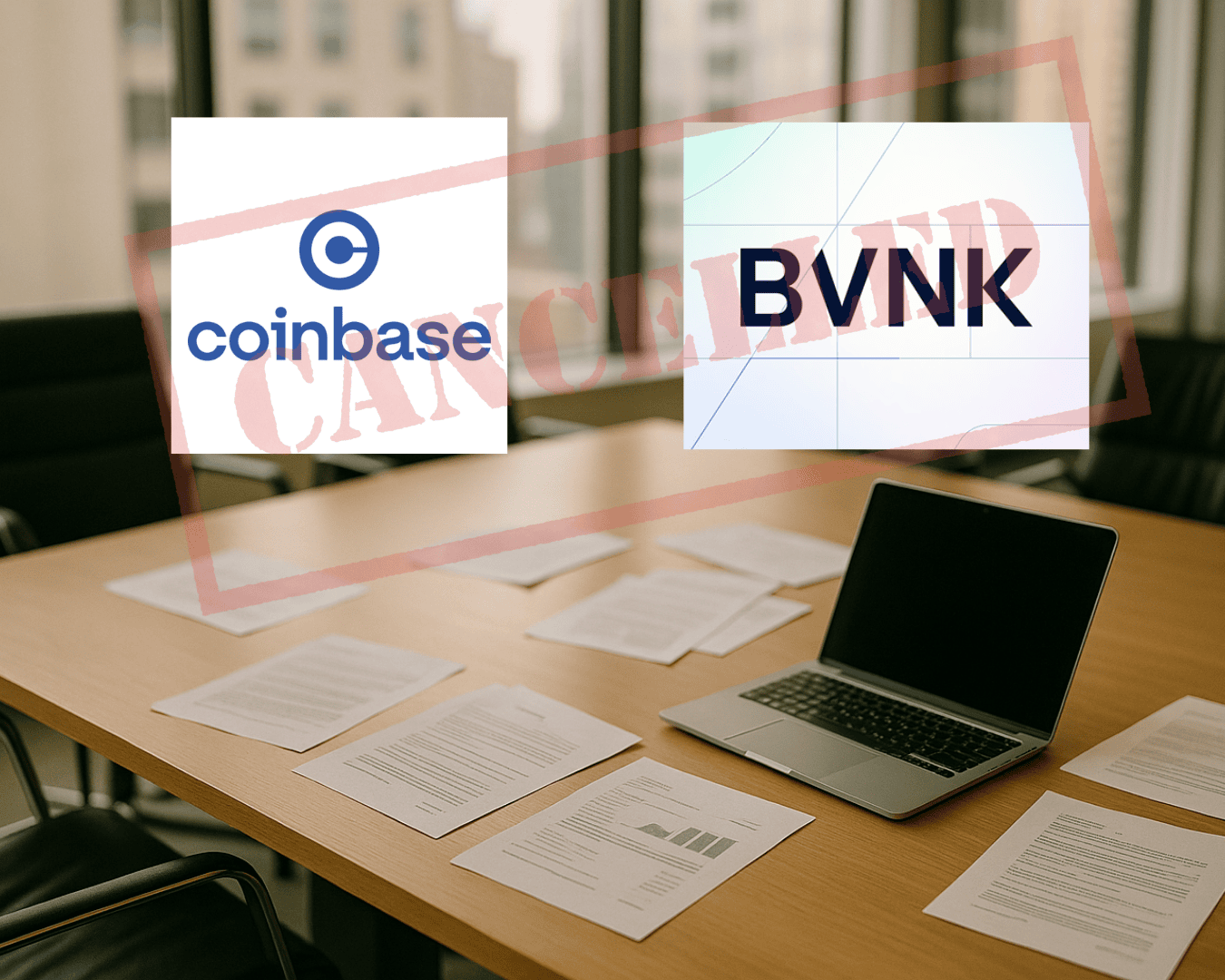









.png)




























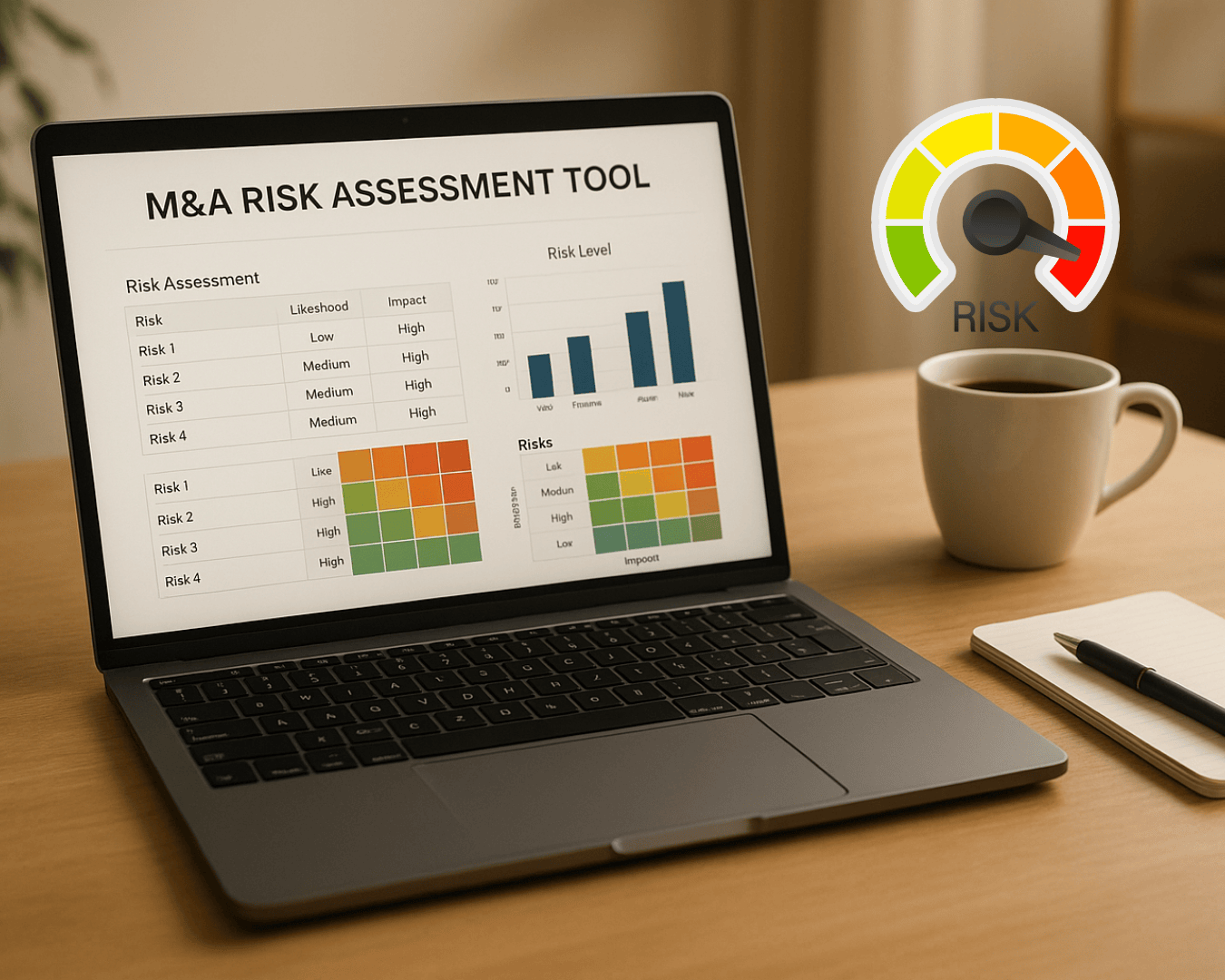

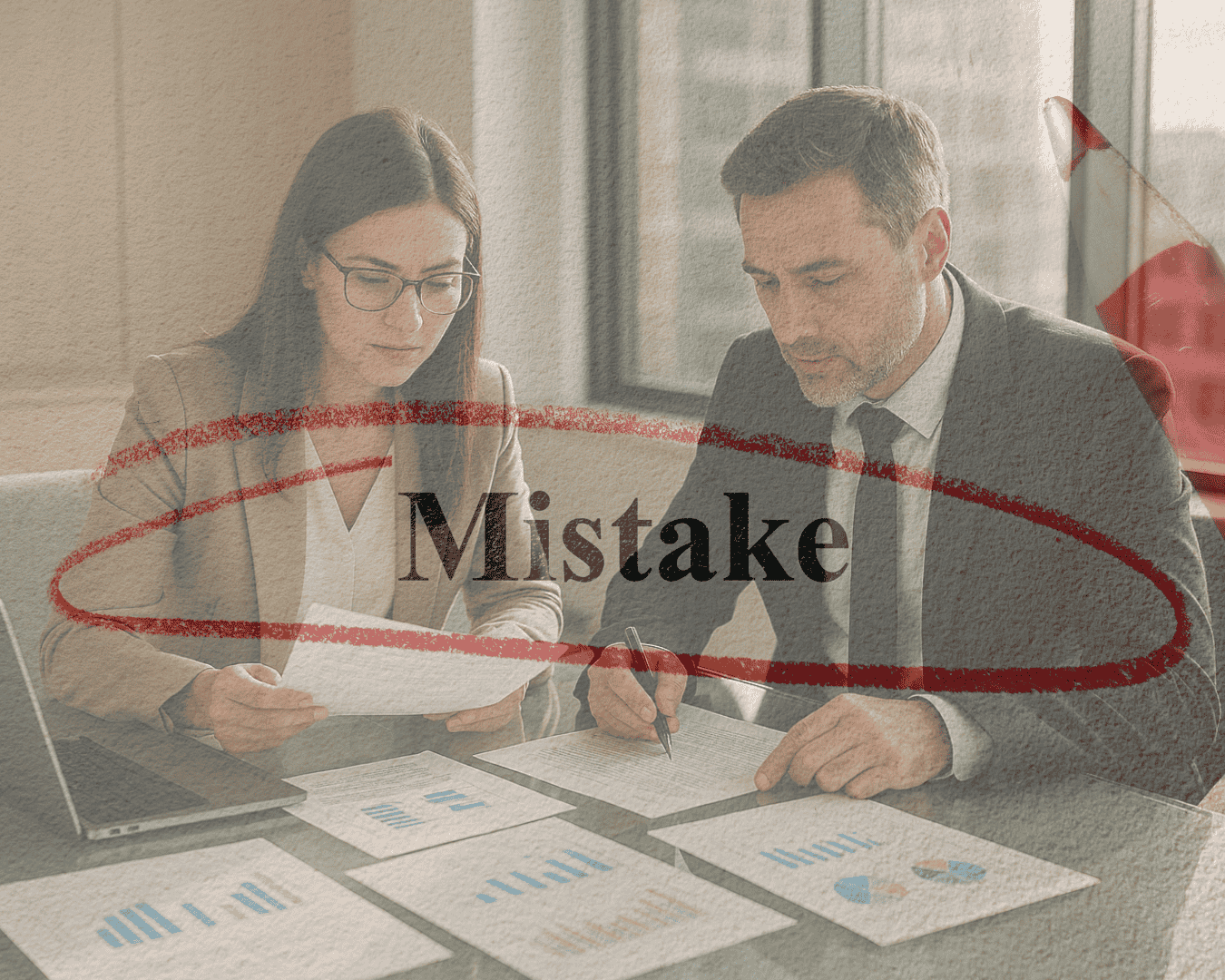
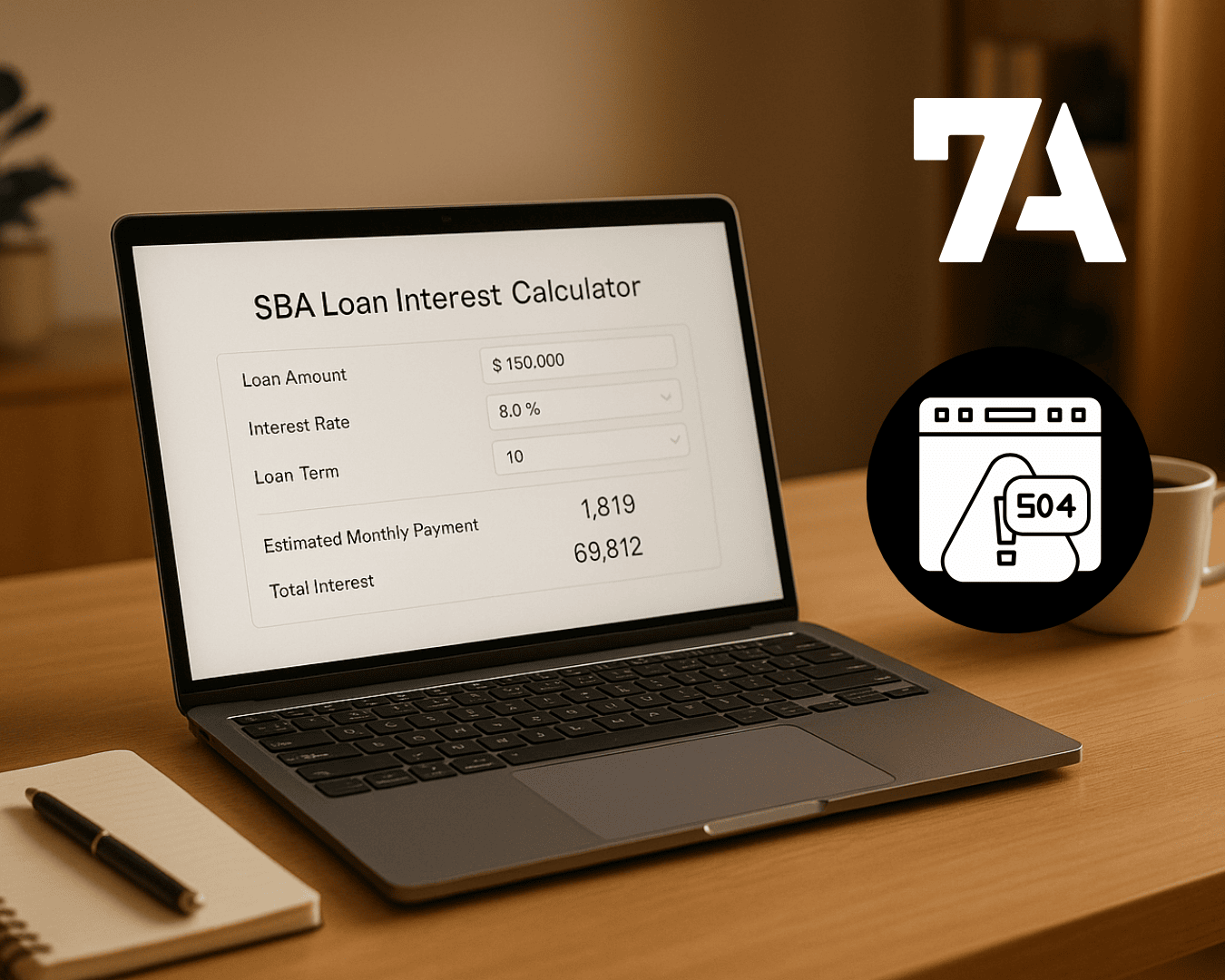








%20Loan%20Application%20Checklist.png)
